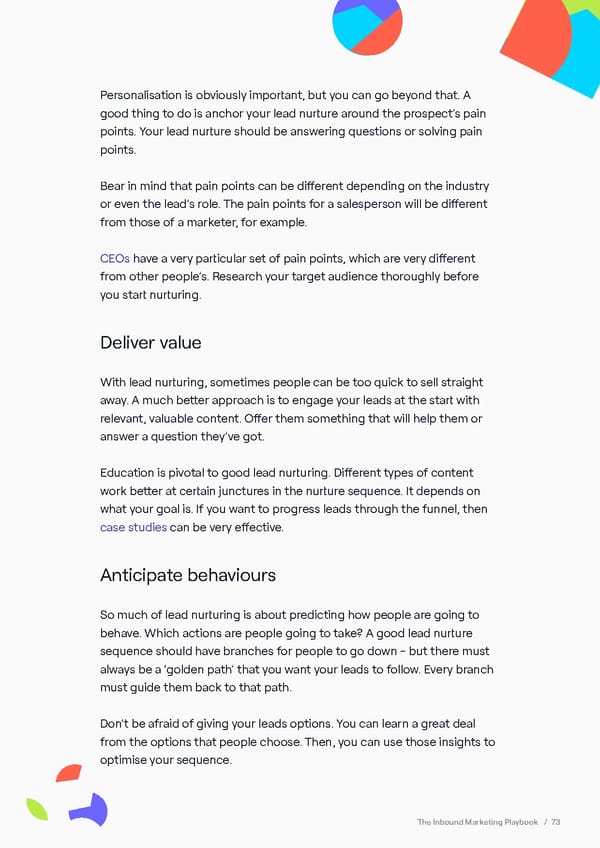Personalisation is obviously important, but you can go beyond that. A good thing to do is anchor your lead nurture around the prospect’s pain points. Your lead nurture should be answering questions or solving pain points. Bear in mind that pain points can be different depending on the industry or even the lead’s role. The pain points for a salesperson will be different from those of a marketer, for example. CEOs have a very particular set of pain points, which are very different from other people’s. Research your target audience thoroughly before you start nurturing. Deliver value With lead nurturing, sometimes people can be too quick to sell straight away. A much better approach is to engage your leads at the start with relevant, valuable content. Offer them something that will help them or answer a question they’ve got. Education is pivotal to good lead nurturing. Different types of content work better at certain junctures in the nurture sequence. It depends on what your goal is. If you want to progress leads through the funnel, then case studies can be very effective. Anticipate behaviours So much of lead nurturing is about predicting how people are going to behave. Which actions are people going to take? A good lead nurture sequence should have branches for people to go down - but there must always be a ‘golden path’ that you want your leads to follow. Every branch must guide them back to that path. Don’t be afraid of giving your leads options. You can learn a great deal from the options that people choose. Then, you can use those insights to optimise your sequence. The Inbound Marketing Playbook / 73
 The No Fluff Guide to Inbound Marketing Page 75 Page 77
The No Fluff Guide to Inbound Marketing Page 75 Page 77